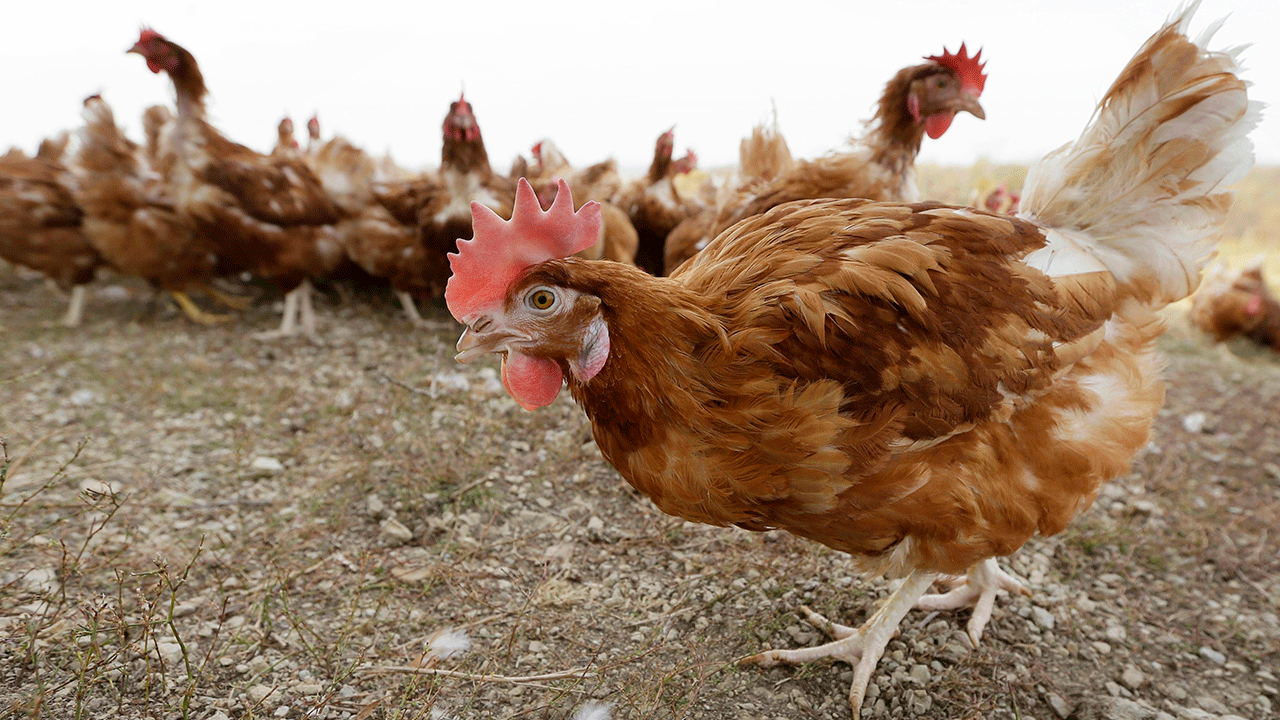Fox News Flash top headlines for November 13
Fox News Flash top headlines are here. Check out what's clicking on Foxnews.com.
An additional 1.2 million chickens will be slaughtered to prevent the spread of the bird flu after the virus was confirmed on an Iowa egg farm in the second massive case this week.
The Iowa Department of Agriculture and Land Stewardship announced the latest bird flu infection at a farm in Taylor County Friday, and Iowa's governor immediately declared a disaster there to make sure the state has the resources to respond quickly.
The Iowa case is just the latest one in the outbreak that began early last year and has prompted officials to kill a total of nearly 63 million birds. Earlier this week, 1 million chickens were killed on a Minnesota egg farm. But the vast majority of the cases, or nearly 58 million birds, occurred last year.
AVIAN INFLUENZA: SYMPTOMS OF THE DISEASE AND HOW IT AFFECTS BIRDS AND HUMANS

Chickens walk in a fenced pasture at an organic farm in Iowa on Oct. 21, 2015. Another 1.2 million chickens will have to be slaughtered after bird flu was confirmed on an Iowa egg farm in the second massive case this week just days after nearly 1 million chickens had to be killed on a Minnesota egg farm. (AP Photo/Charlie Neibergall, File)
GLOBAL RISE IN BIRD FLU OUTBREAKS RAISES CONCERN OVER VIRUS' ABILITY TO ADAPT
Anytime a case of bird flu is found the entire flock is killed to help keep the highly contagious virus from spreading to another farm.
The U.S. Department of Agriculture has been finding fewer wild birds carrying the virus this year, which suggests that some ducks and geese may be developing immunity. Farmers also have been working hard to keep the virus off their farms, and the government has been trying to respond quickly anytime bird flu is found.
Iowa remains the hardest hit state in the nation, with more than 17 million birds killed there since the outbreak began. The state is the nation's leading egg producer and egg farms tend to have the most birds. In one case last year, 5 million chickens were slaughtered on a single Iowa egg farm.
Nebraska comes next with more than 6.7 million birds killed, followed by Colorado's 6.26 million and Minnesota's 5.6 million.
Most of the recent cases this fall have been found in Minnesota, South Dakota and Iowa along one of the major migratory paths ducks and geese follow as they fly south for winter. The virus is spread easily by the droppings of those wild birds that can be tracked onto farms, and there has been an expected uptick in cases since the fall migration began.
FIRST CASE OF AVIAN FLU DETECTED ON US COMMERCIAL POULTRY FARM SINCE APRIL
Poultry and egg farmers try to keep the virus from reaching their farms by requiring workers to shower and change clothes before they enter barns. Trucks are also sanitized before they enter the farm, and separate sets of tools are kept for each barn.
The losses last year contributed to higher egg and poultry prices, but those prices have dropped significantly this year.
Bird flu isn’t believed to be a threat to food safety because officials slaughter all the birds on farms where the disease is found before they can enter the food supply, and properly cooking poultry and eggs to 165 degrees Fahrenheit (73.89 degrees Celsius) will kill any viruses. Infections in humans are rare and usually come only in people with prolonged exposure to sick birds.

